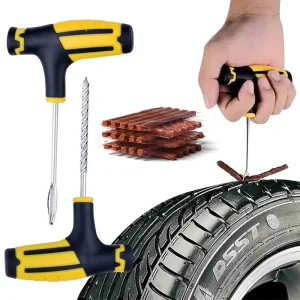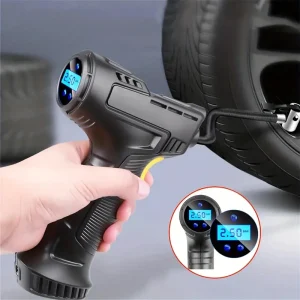There's no doubt that dealing with a flat tire can be stressful, especially when you're wondering if you can safely drive on it to get to a repair shop. In this comprehensive guide, we will explore the dangers of driving on a flat tire, how far you can safely drive with a flat tire, and necessary tips to prevent flat tires. Additionally, we will provide step-by-step instructions on how to fix a flat tire quickly to avoid a drive on a flat tire and effectively, ensuring you can get back on the road safely. So, if you've ever found yourself asking “Can I drive with a flat tire?”, this guide is for you.
 Key Takeaways:
Key Takeaways:
- Driving with a flat tire is dangerous: It can lead to poor handling, loss of control, and an increased risk of accidents.
- Only run-flat tires can be driven on with no air: They are designed to remain functional with zero air pressure for a limited distance.
- Prevent flat tires by keeping tires properly inflated: Maintain tire pressure between 32-35 psi to reduce the risk of punctures. This is one way of avoiding to drive on a flat tire.
- Avoid driving on construction sites: Sharp objects and dropped nails in construction areas can increase the risk of a flat tire hence staying away from engaging on a drive on a flat tire.
- Fixing a flat tire: You can temporarily fix a punctured tire yourself by using a plug kit, but it's recommended to visit a tire shop for a complete repair.
Can I Drive on a Flat Tire?
Immediate Dangers of Driving on a Flat
Some drivers may consider driving on a flat tire to be a temporary solution to reach the nearest auto shop for repairs. However, this decision can lead to serious consequences. Little control and poor handling are just the beginning of the dangers. Driving on a flat tire increases the likelihood of causing an accident, putting not only yourself but also your passengers and pedestrians at risk. Better avoid to drive on a flat tire.
Long-Term Damages to Your Vehicle
Your decision to drive on a flat tire can have lasting effects on your vehicle. It is not just about the inconvenience of getting a flat tire fixed; driving on a damaged tire can result in long-term damages to your car and its wheels. This can lead to additional expenses for repairs in the future.
It is necessary to prioritize safety and take the necessary steps to properly address a flat tire rather than risking further damage to your vehicle by driving on it.
Recognizing a Flat Tire: Signs and Symptoms
Visual Indicators of a Flat Tire
There's little worse than realizing you have a flat tire while on the road, but being able to recognize the signs early can help prevent potentially dangerous situations. Visual indicators of a flat tire include a visibly deflated tire, bulges or blisters on the sidewall, and foreign objects lodged in the tire.
Auditory Cues That Your Tire Is Compromised
To ensure your safety on the road, it's important to pay attention to auditory cues that indicate your tire is compromised. Listening for flapping or thumping sounds while driving could be a sign of a flat tire. If you hear such noises, it's crucial to pull over immediately to avoid further damage to your vehicle.
With the potential dangers associated with driving on a flat tire, it is crucial to be vigilant and attentive to any unusual sounds coming from your vehicle. Ignoring auditory cues that your tire is compromised can lead to serious accidents and costly repairs. It's always better to err on the side of caution and address any tire issues promptly.
Tactile Feedback from the Vehicle
The tactile feedback from your vehicle can also provide valuable information about the condition of your tires. If you notice vibrations or shaking in the steering wheel or vehicle body, it could be a sign of a flat tire. In such cases, it's best to pull over to a safe location and inspect your tires to ensure your safety on the road.
The tactile feedback from the vehicle is an important aspect to consider when determining if you have a flat tire. By being aware of how your vehicle feels while driving, you can take proactive steps to address any tire issues and avoid potentially hazardous situations to drive on a flat tire.
Factors That Influence Flat Tire Occurrences
Despite taking precautions, flat tires can still occur due to various factors. Perceiving these factors can help drivers anticipate and prevent potential tire issues.
Types of Tire Damage and Their Causes
| Now | Knowing the different types of tire damage and their causes can help drivers identify potential issues early on. |
The Role of Road Conditions
Road conditions play a significant role in the occurrence of flat tires. Poorly maintained roads, debris, and sharp objects can all contribute to tire damage forcing you to drive on a flat tire.
Tire Age and Wear as Contributing Factors
- Even with regular maintenance, tires can deteriorate over time, increasing the risk of punctures or blowouts. This emphasizes the importance of monitoring tire age and wear.
- This is especially crucial for older vehicles or those driven frequently over long distances. Regularly checking tire age and wear can help prevent sudden tire failures.
Their age and amount of wear are important factors to consider when evaluating the potential risk of encountering a flat tire.
Types of Tires and Their Susceptibility to Flats
All tires are not created equal when it comes to their susceptibility to flats. The type of tire you have on your vehicle can play a significant role in how likely you are to experience a puncture. Here is a breakdown of the common types of tires and their susceptibility to flats:
| Standard Tires | More susceptible to flats due to thinner sidewalls |
| Run-Flat Tires | Less susceptible to flats as they are designed to be driven with low or no air pressure |
Standard vs. Run-Flat Tires
Susceptibility to flats can vary between standard and run-flat tires. While standard tires are more prone to punctures due to their thinner sidewalls, run-flat tires are designed to resist flats by allowing continued driving even with low or no air pressure. Should you drive on a flat tire. This distinction can impact your decision-making when it comes to driving on a flat tire.
All-Season vs. Performance Tires
There's a difference in susceptibility to flats between all-season and performance tires. All-season tires are more versatile and designed to provide traction in various weather conditions, but they may be more susceptible to flats due to their construction. On the other hand, performance tires, while offering superior handling and grip, may be less prone to flats due to their sturdier build. Considering this factor can help you choose the right type of tire based on your driving needs.
| All-Season Tires | More versatile but potentially more susceptible to flats |
| Performance Tires | Offer superior grip and handling, with lower susceptibility to flats |
Pros and Cons of Different Tire Types
While all tire types serve the necessary function of providing traction and stability, each comes with its own set of pros and cons. Understanding these nuances can help you make an informed decision when selecting tires for your vehicle.
| Standard Tires | Run-Flat Tires |
| More susceptible to flats due to thinner sidewalls | Less prone to flats, designed to be driven with low or no air pressure |
Types of tires can significantly impact your driving experience, especially when it comes to dealing with flat tires. It's crucial to consider the pros and cons of each type to ensure safe and efficient driving on the road.
Tips for Flat Tire Prevention
Your safety on the road starts with taking care of your tires. By following some simple maintenance routines, you can significantly reduce the risk of getting a flat tire. Regular tire check-ups and proper monitoring of tire pressure are crucial steps to ensure your tires are in good condition. Recognizing the impact of your driving habits on tire wear and tear is also crucial in preventing unexpected flat tires hence leading to drive on a flat tire.
Regular Tire Maintenance Routines
There's no denying that regular tire maintenance is key to preventing flat tires. By inspecting your tires for signs of wear and tear, you can catch potential issues early and address them before they become a problem. Making sure your tires are properly inflated and rotating them regularly can also extend their lifespan and reduce the risk of a puncture.
 Understanding and Monitoring Tire Pressure
Understanding and Monitoring Tire Pressure
To maintain optimal tire performance and prevent flat tires, it's crucial to understand the importance of tire pressure. Checking your tire pressure regularly and inflating them to the manufacturer's recommended levels can improve fuel efficiency and overall safety on the road. An underinflated tire is more prone to damage and can lead to premature wear and unexpected flats.
Another aspect of tire pressure management is monitoring for any sudden drops, which could indicate a leak or puncture. By addressing these issues promptly, you can avoid potential flat tires and ensure the longevity of your tires.
The Impact of Driving Habits on Tire Longevity
Clearly, your driving habits play a significant role in the longevity of your tires. Harsh braking, accelerating quickly, and taking sharp turns can put unnecessary strain on your tires, increasing the likelihood of a flat. By driving responsibly and avoiding aggressive maneuvers, you can prolong the life of your tires and minimize the risk of unexpected punctures.
How Far Can You Drive on a Flat Tire?
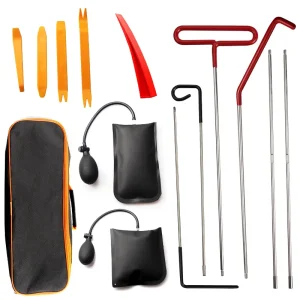 Once again, the question of how far you can drive on a flat tire depends on the type of tire you have. Run-flat tires, specifically designed to remain functional with zero air pressure, can be driven for about 50 miles. This should give you enough time to safely reach an auto shop or garage for repair.
Once again, the question of how far you can drive on a flat tire depends on the type of tire you have. Run-flat tires, specifically designed to remain functional with zero air pressure, can be driven for about 50 miles. This should give you enough time to safely reach an auto shop or garage for repair.
Emergency Scenarios: Assessing Your Situation
Clearly, in emergency scenarios with a flat tire, it's important to assess your situation and make informed decisions. If you have run-flat tires, knowing you can drive on them for a limited distance can provide a sense of security in these situations.
Understanding the Limitations of Run-Flat Tires
Some may assume that run-flat tires are invincible, but they too have their limitations. While they can be driven for a limited distance after a puncture, it's crucial to remember that this is only a temporary solution. It's still recommended to get the tire repaired or replaced as soon as possible to avoid any potential risks.
To fully understand the limitations of run-flat tires, it's vital to know that they are not a permanent fix for a punctured tire. While they offer some flexibility in emergency situations, they are not a substitute for proper tire maintenance and repair. It's always best to prioritize safety and take necessary steps to address the issue promptly.
Emergency Steps: What to Do When You Get a Flat Tire
Safe Practices for Pulling Over
Flat tires can happen unexpectedly, but it's important to react calmly and safely. After you notice a flat tire, signal and carefully pull over to a safe location away from traffic. Ensure your hazard lights are on to alert other drivers of your situation. Remember to engage your parking brake before exiting the vehicle to assess the damage.
Assessing the Severity of the Flat Tire
While assessing the severity of a flat tire, consider factors such as the location and extent of the damage. Look for visible punctures or damage to the tire tread. Additionally, check the air pressure in the affected tire to determine if it is safe to attempt to drive on. Remember that driving on a flat tire can lead to further damage to your vehicle.
Contacting Roadside Assistance vs. Self-Help
Flat tires can be a frustrating experience, but it's crucial to consider whether to contact roadside assistance or attempt to fix the flat tire yourself. In the context of your situation, driving with a damaged tire could lead to poor handling and control, increasing the risk of an accident. However, if you have the necessary tools and expertise, fixing the flat tire yourself could be a viable option. Keep in mind, safety should always be a top priority when dealing with a flat tire emergency.
How to Fix a Flat Tire: A Step-By-Step Guide
Preparing Your Vehicle and Assembling Tools
While dealing with a flat tire, it's crucial to be prepared and have the necessary tools at hand. In the table below, you will find the crucial items needed to successfully fix a flat tire quickly.
| Vehicle | Tools |
| Tire Jack | Lug Wrench |
| Flashlight | Flat Tire Repair Kit |
Locating the Leak
An integral part of fixing a flat tire is locating the leak. By inspecting the tire carefully, you can identify the source of the issue and take appropriate steps to address it.
Assembling the necessary tools and equipment before starting the repair process is crucial to ensure a smooth and efficient fix. Make sure to have everything within reach to avoid delays or complications as you work on the flat tire.
Step 1: Removing the Tire
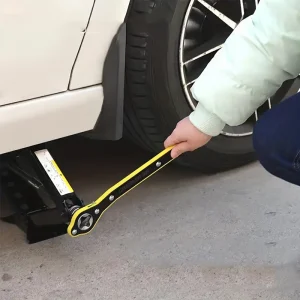 There's a specific method to safely and effectively remove the flat tire from your vehicle. By following the steps outlined in this section, you can efficiently take off the damaged tire in preparation for repair.
There's a specific method to safely and effectively remove the flat tire from your vehicle. By following the steps outlined in this section, you can efficiently take off the damaged tire in preparation for repair.
With the tire removed from the vehicle, you can begin the process of applying a plug or patch to seal the leak and restore the tire's functionality. This step is crucial in ensuring a successful repair that will allow you to safely drive your vehicle once again.
Step 2: Applying the Plug or Patch
To effectively address the puncture in your tire, apply the appropriate plug or patch as per the instructions provided in your repair kit. This step will help seal the leak and restore the tire's integrity, allowing you to drive safely once the repair is complete.
Understanding the importance of testing the repaired tire and ensuring it is securely reinstalled on your vehicle will help you avoid any potential issues while driving. Following the recommended steps for testing and reinstalling the tire is crucial for a successful repair.
Step 3: Testing and Reinstalling the Tire
The final steps of the tire repair process involve thorough testing to ensure the plug or patch has effectively sealed the leak. Once the tire has been tested and confirmed to be in good condition, it can be reinstalled on the vehicle securely, allowing you to resume normal driving activities.
Post-Repair Tire Maintenance Tips
After fixing a flat tire, it's important to practice proper post-repair tire maintenance to extend the longevity of your tires and prevent future issues. Any signs of wear or uneven tire surfaces should be addressed promptly to avoid potential punctures or blowouts.
- Check tire pressure regularly to ensure optimal performance and safety.
- Monitor tire wear and rotation to promote even tread wear and extend tire life.
Pros and Cons of Temporary Fixes vs. Professional Repairs
| Temporary Fixes | Professional Repairs |
| Quick and convenient | Ensures long-term safety |
| May not be as durable | Expert evaluation of tire condition |
| Cost-effective for immediate need | Proper tools and equipment |
| Can be done without professional help | Warranty on repairs |
Tire Repair Kits: Benefits and Limitations
Clearly, tire repair kits can be a lifesaver in emergency situations where professional help isn't readily available. However, they are only a temporary fix and may not provide the same level of safety and durability as a professional repair.
When to Visit a Tire Shop or Mechanic
Shop: To ensure the long-term safety and performance of your vehicle, it is recommended to visit a tire shop or mechanic if you have a flat tire. Professional repairs offer expert evaluation and proper tools for a reliable fix.
Cost Comparison: DIY vs. Professional Services
| DIY | Professional Services |
| Cost-effective initially | Long-term safety and durability |
| No warranty on repair | Warranty on repairs |
| Can be convenient for quick fixes | Expert evaluation of tire condition |
For instance, while DIY methods may be cost-effective initially, professional services ensure long-term safety and durability with expert evaluation and warranty on repairs. It is crucial to consider the long-term benefits and risks when deciding between temporary fixes and professional repairs for your flat tire.
Driving to Safety: Tips for Handling a Flat Tire on the Road
Reducing Speed and Maintaining Control
Noticing a flat tire while driving can be alarming, but it is crucial to stay calm and take immediate action to ensure the safety of yourself and those around you. Little by little, reduce your speed by easing off the accelerator and avoiding sudden braking or sharp turns. This will help you maintain control of your vehicle and prevent further damage while navigating to a safe location for tire repair.
Navigating to a Safe Location
Even if you are on a busy road or highway, it is imperative to safely navigate your vehicle to a secure location away from moving traffic. Plus, it is recommended to pull over to the right side of the road if possible and turn on your hazard lights to alert other drivers of your situation. By doing so, you not only ensure your safety but also the safety of others on the road.
Preserving the Condition of the Wheel and Axle
Road conditions play a significant role in preserving the condition of your wheel and axle when driving with a flat tire. Control your steering wheel with gentle movements to avoid putting unnecessary strain on the wheel and axle components. By doing so, you can minimize potential damage and ensure a smoother transition to a safer location for tire repair.
Avoiding a Flat Tire on Highway Roads
The Role of Proper Tire Inflation
Many drivers overlook the importance of maintaining proper tire inflation, but it is crucial in preventing flat tires on highway roads. According to data, keeping your tire pressure between 32-35 psi reduces the risk of cracked tires and punctures while driving, ensuring a smoother and safer journey.
Regular Tire Inspections and Preventive Measures
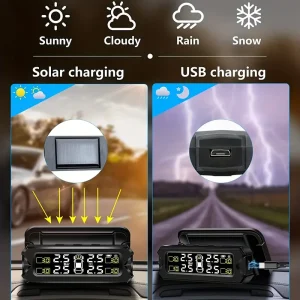 There's no denying that regular tire inspections and preventive measures are key in avoiding flat tires on the highway. By assessing your tire's wear patterns for signs of uneven wear and performing proper tire rotation every six months, you significantly reduce the chance of tire punctures and potential accidents due to tire damage.
There's no denying that regular tire inspections and preventive measures are key in avoiding flat tires on the highway. By assessing your tire's wear patterns for signs of uneven wear and performing proper tire rotation every six months, you significantly reduce the chance of tire punctures and potential accidents due to tire damage.
For instance, regularly checking tire pressure and tread depth, as well as ensuring proper alignment and balancing, play a crucial role in maintaining optimal tire health and longevity, ultimately reducing the risk of flat tires on highway roads. Better staying away from a drive on a flat tire.
Advanced Tire Technology and Flat Tire Solutions
For:
- The Evolution of Self-Sealing Tires
| While | traditional tires require immediate repair or replacement when punctured, self-sealing tires have revolutionized the tire industry. These tires are equipped with a specialized lining that instantly seals punctures, preventing air loss and allowing the driver to continue driving safely. |
- Contributions of Tire Pressure Monitoring Systems
| On | the other hand, tire pressure monitoring systems (TPMS) have significantly improved driving safety by alerting drivers to changes in tire pressure. This technology helps drivers detect punctures or leaks early, reducing the risk of driving on underinflated or flat tires. |
- Innovations in Puncture-Resistant Tire Design
| Contributions | such as run-flat tires and reinforced sidewalls have enhanced the durability of tires, making them more resistant to punctures. These innovative designs provide drivers with added peace of mind knowing that their tires are less likely to fail due to road hazards. |
Summing up
Driving on a flat tire is extremely dangerous and should be avoided at all costs. In the event of a punctured tire, it is best to pull over safely and either change the tire with a spare or call for assistance. By following proper tire maintenance tips such as keeping tires inflated, assessing for uneven wear, and avoiding construction areas, drivers can reduce the risk of experiencing flat tires. In situations where fixing a flat tire is necessary, following a step-by-step guide can help drivers safely and effectively repair the tire before driving to a professional for further inspection. Be mindful of, safety should always be the top priority when dealing with flat tires.
FAQ
Q: Can I drive on a flat tire?
A: Driving on a flat tire is highly discouraged as it can lead to poor handling, loss of control, and an increased risk of accidents. It is best to avoid driving on a flat tire as much as possible.
Q: How far can I drive on a flat tire?
A: If you have run-flat tires specifically designed to function with zero air pressure, you can drive for about 50 miles with a flat tire. This should be sufficient to reach an auto shop or garage for repair. Avoid a drive on a flat tire if necessary.
Q: How can I prevent getting a flat tire?
A: To prevent flat tires, keep your tires properly inflated with the right air pressure (32-35 psi), regularly assess tire wear for signs of uneven wear, and avoid driving in construction areas where sharp objects may puncture your tires.
Q: What should I do if I get a flat tire?
A: If you get a flat tire, your options include drive on a flat tire (not recommended), changing the tire with a spare and driving to an auto shop, calling a tow truck for assistance, or attempting to fix the flat tire yourself.
Q: How can I fix a flat tire myself?
A: To fix a flat tire yourself, you will need a plug kit. First, find the leak, jack the car up, clean the hole, plug the hole with adhesive, and then drive safely to a tire shop for a complete repair service. A quick repair and you won't drive on a flat tire.
Serving All USA States and Territories
Alabama (AL), Alaska (AK), Arizona (AZ), Arkansas (AR), California (CA), Colorado (CO), Connecticut (CT), Delaware (DE), Florida (FL), Georgia (GA), Hawaii (HI), Idaho (ID), Illinois (IL), Indiana (IN), Iowa (IA), Kansas (KS), Kentucky (KY), Louisiana (LA), Maine (ME), Maryland (MD), Massachusetts (MA), Michigan (MI), Minnesota (MN), Mississippi (MS), Missouri (MO), Montana (MT), Nebraska (NE), Nevada (NV), New Hampshire (NH), New Jersey (NJ), New Mexico (NM), New York (NY), North Carolina (NC), North Dakota (ND), Ohio (OH), Oklahoma (OK), Oregon (OR), Pennsylvania (PA), Rhode Island (RI), South Carolina (SC), South Dakota (SD), Tennessee (TN), Texas (TX), Utah (UT), Vermont (VT), Virginia (VA), Washington (WA), West Virginia (WV), Wisconsin (WI), Wyoming (WY).
U.S. territories:
American Samoa (AS), District of Columbia (DC), Guam (GU), Northern Mariana Islands (MP), Puerto Rico (PR), Virgin Islands (VI), Trust Territories (TT).
In all Major USA Cities
New York City, Los Angeles, Chicago, Houston, Phoenix, Philadelphia, San Antonio, San Diego, Dallas, Jacksonville, Fort Worth, Columbus, San Francisco, Charlotte, Seattle, Denver, Washington, Washington DC, Boston, El Paso, Detroit, Portland, Memphis, Oklahoma City, Las Vegas, Baltimore, Milwaukee, Albuquerque, Tucson, Fresno, Mesa, Sacramento, Atlanta, Kansas City, Colorado Springs, Miami, Raleigh, Omaha, Long Beach, Virginia Beach, Oakland, Minneapolis, Tulsa, Arlington, Tampa, New Orleans, Wichita, Cleveland, Bakersfield, Aurora, Anaheim, Urban Honolulu, Santa Ana, Riverside, Corpus Christi, Stockton, Henderson, St. Paul, St. Louis, Cincinnati, Pittsburgh, Greensboro, Anchorage, Plano, Lincoln, Orlando, Irvine, Newark, Toledo, Durham, Chula Vista, Fort Wayne, Jersey City, St. Petersburg, Laredo, Madison, Chandler, Buffalo, Lubbock, Scottsdale, Reno, Glendale, Gilbert, North Las Vegas, Norfolk, Chesapeake, Garland, Irving, Hialeah, Fremont, Boise City, Richmond, Baton Rouge, Spokane, Des Moines, Tacoma, San Bernardino, Modesto, Fontana, Moreno Valley, Huntington Beach.
